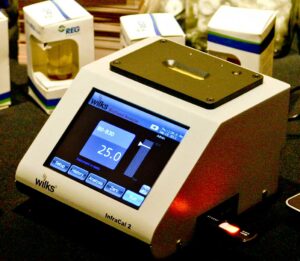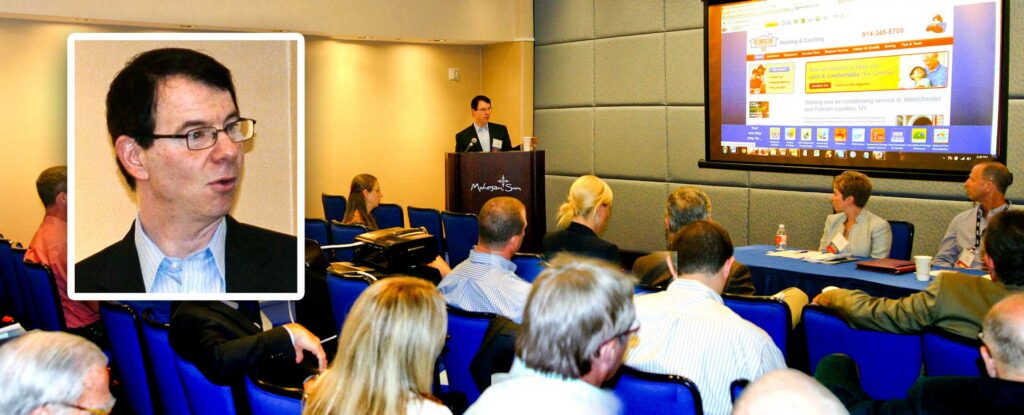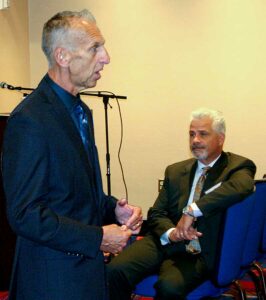Written on: October 4, 2013 by Mike SanGiovanni
On September 19-20, the Connecticut Energy Marketers Association (CEMA–formerly ICPA*), the Massachusetts Energy Marketers Association (MEMA–formerly MOC**) and the Oil Heat Institute of Rhode Island (OHILI) jointly sponsored the first Southern New England Energy Conference. Held at the Mohegan Sun Casino, in Uncasville, CT, the two day program, centered around the three neighboring states, included a day and a half of seminars and a limited trade show featuring tabletop exhibits.
Bioheat was prominently represented by presentations in several seminars, and other presentations covered the business gamut, from service contracts to mobile payments, the energy situation in New England, to switching to propane, financial training for service managers, diversification and even Obamacare. In all, some 30 breakout sessions were available to attendees.
Keynote speaker during the luncheon was Tom Kloza, Oil Price Information Service, who discussed current energy markets and prices. The first day’s evening concluded with an awards dinner and hospitality suite.
*Independent Connecticut Petroleum Association
** Massachusetts Oilheat Council
How much biodiesel is in my fuel?
If you’re buying heating oil these days, chances are there might be some fraction of your wet barrels that is biodiesel. If it’s as much as 5%, and you blend 5% more, you’re actually delivering 10%. It would be handy to check your product for biodiesel content. During the Southern New England Energy Conference in Connecticut, Daniel Falcone, biodiesel sales manager, northeast for REG (Renewable Energy Group), demonstrated the Wilks InfraCal 2, a portable infrared analyzer that determined, within 30 seconds, the biodiesel content of fuel with an accuracy of .1%. The unit features a touchscreen display, no moving parts and a USB port for downloading data. Daniel Falcone said the it’s not necessary to purchase the $7,000 instrument, as REG will perform the service for its customers. In use, the unit is zeroed out, a sample of the product is placed on top and within 30 seconds, the percentage of biodiesel in the fuel is displayed. For more information, contact Daniel.falcone@REGI.com.
Southern New England Energy Conference in Connecticut, Daniel Falcone, biodiesel sales manager, northeast for REG (Renewable Energy Group), demonstrated the Wilks InfraCal 2, a portable infrared analyzer that determined, within 30 seconds, the biodiesel content of fuel with an accuracy of .1%. The unit features a touchscreen display, no moving parts and a USB port for downloading data. Daniel Falcone said the it’s not necessary to purchase the $7,000 instrument, as REG will perform the service for its customers. In use, the unit is zeroed out, a sample of the product is placed on top and within 30 seconds, the percentage of biodiesel in the fuel is displayed. For more information, contact Daniel.falcone@REGI.com.
Working the numbers in the service department
Mike Hatch, president, and Michelle Wilson, vice president of Service Edge, presented an introduction their financial module for service managers. Hatch pointed out that if not now,
Somewhere around $256,000 could be added to the bottom line in the slower nine months of the year without incurring additional labor costs. The objective, now that the target has been identified, would be to fill that RAC with billable work. Service Edge suggests that available capacity could be accounted for with dentist style tune-up scheduling, product diversification, targeted marketing database and better customer communications and marketing.
Another exercise they provided was a way to quantify what a reduction in call backs, say from 10% to 5%, means in real terms. This is a process in which, by arriving at the true cost of such procedures, communication and feedback in the service department can be improved, morale raised and areas of process improvement or training can be identified.
Inventory management is another area that, said Hatch and Willson, is a critical process. The financial module shows how to determine whether or not a part time inventory manager is necessary, given the frequency techs are running to the supply house daily. What would be saved if the trips were reduced by 50% of the current level?
The actual financial module, part of Service Edge’s training for service managers, would take hours to cover. Additional information is available from michelle@yourservicedge.com or mike_hatch@bostonenv.com.
Is your contingency plan in place?
Joe Vassallo asked attendees whether or not they had contingency plans in case a key

Panel discussion on Diversification, moderated by Rich Goldberg (inset), Warm Thoughts Communications

An update on bioheat® state mandates was provided by Mike Ferrante (left) of MEMA and Paul Nazzaro, representing the National Biodiesel Board.